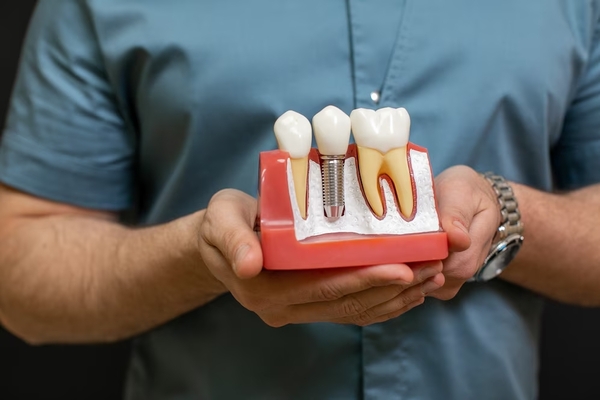Dental grafting has transformed the field of oral rehabilitation, offering hope to individuals with jawbone deterioration due to tooth loss, trauma, or disease. By restoring bone structure, bone grafts provide a solid foundation for dental implants, thereby enhancing overall oral health and stability. Discover the power of bone grafts to restore damaged jaws.
What is a Dental Graft?
A dental bone graft procedure is a surgical intervention that replaces missing or deteriorated jawbone with bone material, either from the patient’s body or a donor source. This augmentation is essential for patients lacking sufficient bone density to support dental implants or other restorative procedures. The grafted material serves as a scaffold, promoting new bone growth and ultimately integrating with the existing bone structure.
Benefits of Bone Grafts
- Foundation for Dental Implants: Creates the support for future dental implants that will last a long time. and longevity of dental implants.
- Prevents Facial Collapse: Maintains facial structure by preventing the sunken appearance associated with bone loss.
- Enhances Oral Functionality: Improves chewing and speaking abilities by restoring jawbone integrity.
- Prevents Further Bone Loss: Stimulates natural bone growth, halting the progression of bone deterioration.
Types of Bone Grafts for Dental Implants
Khoury Bone Graft (Split Bone Block Technique)
The Khoury technique is renowned for its effectiveness in reconstructing severe bone damage. This method involves harvesting thin cortical bone plates from the patient’s mandibular ramus, the vertical portion of the lower jaw. These plates are then adapted and secured to the damaged site, creating a hole filled with particulate bone material. Over time, this leads to the regeneration of the damaged bone, providing a robust foundation for dental implants. The Khoury technique is known for its ability to achieve significant bone augmentation with high success rates.
Socket Bone Graft
Performed immediately after tooth extraction, this graft preserves the alveolar ridge by filling the empty socket with bone graft material. This approach prevents bone resorption and prepares the site for future implant placement.
Sinus Lift
Also known as sinus augmentation, this dental bone graft procedure elevates the sinus membrane and inserts bone graft material into the sinus floor. It is typically indicated for patients with insufficient upper jawbone height in the posterior maxilla, facilitating the placement of dental implants in this region.
Block Bone Graft
When there is significant bone loss, a block bone graft involves transplanting a solid block of bone, usually harvested from the patient’s chin or ramus, to the deficient area. The block is secured with screws, once integrated, it provides substantial support for implants.
How is the Bone Graft Procedure Performed?
The bone grafting procedure involves several steps:
- Anesthesia: The surgical site is numbed using a local anesthetic to ensure patient comfort. In cases requiring extensive grafting or for anxious patients, sedation may be administered.
- Incision: An incision is made at the gum line to expose the underlying bone at the graft site.
- Graft Placement: The selected bone graft material is shaped and positioned onto the deficient area. In the Khoury technique, thin bone plates are fixed to create a compartment filled with particulate bone.
- Securing the Graft: The graft is stabilized using screws or specialized membranes to prevent movement and promote integration.
- Closure: The gum tissue is repositioned over the graft and secured with sutures.
- Healing: Over the next several months, the grafted material integrates with the existing bone, a process known as osseointegration, forming a solid foundation for future dental implants.
Risks or Complications of Dental Bone Grafts
While generally safe, dental bone grafts carry potential risks:
- Infection: With any surgical procedure, there is a risk of infection. Adhering to post-operative care instructions and taking prescribed antibiotics can mitigate this risk.
- Graft Failure: In some cases, the graft may not integrate properly with the existing bone, necessitating additional procedures.
- Nerve Damage: Improper technique can lead to nerve injury, resulting in numbness or tingling sensations.
- Swelling and Pain: Post-operative discomfort and swelling are common but typically subside with appropriate care.
- Membrane or Graft Exposure: Early complications may include the sutures tearing, resulting in the surgical area opening and exposing the graft or membrane. Timely intervention is crucial to manage these issues.
When to See a Doctor
Seek immediate medical attention post dental bone graft procedure if you experience:
- Severe or worsening pain unrelieved by prescribed medication.
- Excessive bleeding or swelling that persists beyond the expected recovery period.
- At the first sign of infection, such as fever, pus discharge, or foul odor from the surgical site.
- Numbness or tingling that does not resolve, indicating potential nerve involvement.
Recovery Recommendations
Good post-operative care is essential for ensuring the success of a dental bone graft and facilitating a smooth recovery. Here are key guidelines to follow after your procedure:
1. Protect the Surgical Site
- Avoid Disturbance: Do not touch or poke at the graft area with your tongue or fingers to prevent dislodging the graft material.
- No Spitting or Straws: For the first 48 hours, refrain from spitting or using straws, as the suction can disrupt the surgical site and hinder blood clot formation.
2. Manage Bleeding
- Initial Bleeding: Some redness and blood in the saliva is normal up to twenty-four hours after surgery.
- Control Measures: If bleeding persists, place a gauze pad directly over the wound and bite down gently for 30 minutes. Repeat as necessary. If excessive bleeding continues, contact your dental professional.
3. Minimize Swelling
- Cold Compress: Applying an ice to the cheek at the surgical site in 20-minute intervals (20 minutes on, 20 minutes off) during the first 48 hours to reduce swelling.
- Head Elevation: Keep your head elevated above your heart, even during sleep, to help minimize swelling.
4. Maintain Oral Hygiene
- Gentle Rinsing: Ggently rinse your mouth with a warm saltwater solution (½ teaspoon of salt in 8 ounces of warm water) twice to three times daily for 1 week AFTER THE FIRST 24 HOURS. Avoid vigorous rinsing to protect the graft.
- Brushing: Continue brushing your teeth, but avoid the surgical area for the first few days. Resume gentle cleaning around the graft site as advised by your dentist.
5. Follow Dietary Guidelines
- Initial Diet: Stick to soft foods and liquids on the day of surgery. Avoid hot foods and drinks.
- Progression: Gradually reintroduce solid foods as tolerated, but avoid chewing directly on the graft site for at least two weeks.
6. Activity Restrictions
- Rest: Limit physical activity for the first 3 days post-surgery to prevent increased bleeding and swelling.
- Exercise: Heavy lifting and strenuous exercise should be avoided for at least 3 days following surgery.
7. Medication Adherence
- Pain Management: Always take prescription pain medications as directed. OTC pain relievers like ibuprofen or acetaminophen may be recommended.
- Antibiotics: If antibiotics are prescribed, take all pills in the bottle to prevent infection.
Following all post-op directions will allow the surgical site to heal and enhance the success of your dental bone graft. Always follow any personalized instructions provided by your dental professional.
While most people think of Cancun, they think of vacation. At Shtern Dental, we have become the premier dental practice in Cancun. What better place to get much-needed dental work done than in Cancun? Whether you’re looking for Cancun dental care, veneers in Cancun, a root canal in Cancun, a sinus lift, or full smile restoration like All on 4, our expert dental team is here to help in a relaxing environment. Then head to the beach and relax in the sun! Our bilingual staff is waiting to schedule your consultation. Contact Us Today!
















